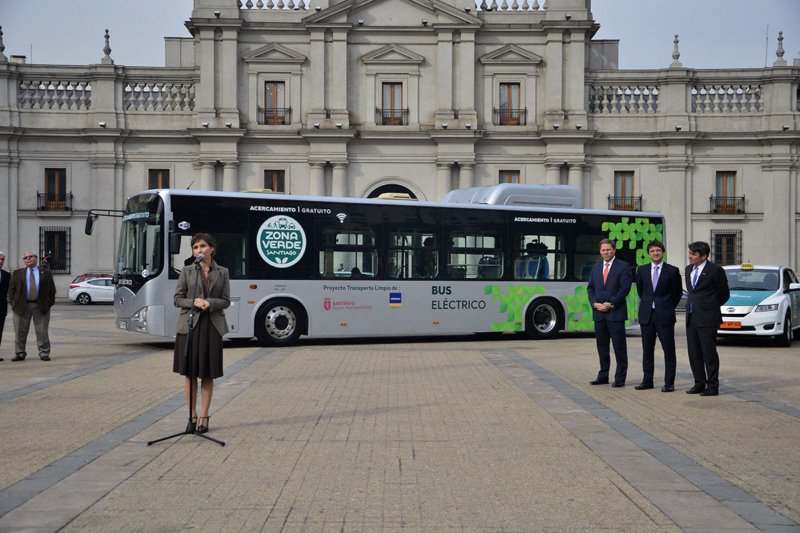Bolivia & the Global Fight Against Climate Change
In the past year, the Bolivian government has emerged as an outspoken critic of climate change policies.
This post is also available in: Español
In November, 100 brand-new electric buses rolled off a cargo ship from China at the port of San Antonio on the Chilean coast. Their impressive convoy from the coast to the capital, Santiago, where they will be incorporated into the city’s public fleet, was shared widely on Twitter as evidence of where public transportation is headed in Chile — toward 100 percent electrification by 2050, according to the government’s plans. The new fleet followed a 2016 deal between Italian energy company Enel and Chinese manufacturer BYD to test two pilot buses which proved to considerably cut costs in comparison with diesel vehicles. They have also been a hit with passengers, with low noise levels and cleaner air inside the vehicles.
Santiago’s story is emblematic of a global evolution in the transport sector. In 2017 the global stock of electric vehicles, or E.V.s, surpassed three million, up from one million in 2015, according to the International Energy Agency. Some forecasts predict even more rapid expansion: Bloomberg’s New Energy Finance projects that the global electric car fleet will surge to 530 million by 2040. Much of this growth is driven by a drop in battery costs and an increase in battery range, but specific cities and countries have also led the way using tools such as tax incentives, tighter fuel-economy standards and electric mobility strategies.Though China and Western Europe are leading the charge on E.V.s, cities in Colombia, Brazil, Chile, Mexico, Uruguay and Costa Rica are also stepping up. With over 80 percent of its citizens residing in urban areas, the region has strong incentives to promote electric mobility. Private vehicle ownership is rising at a dizzying pace — the region has the fastest growing car fleet in the world with the number of vehicles set to triple by 2050 — and the transport sector is already the largest source of energy-related emissions. Air pollution from traffic kills tens of thousands of people every year and many of the region’s major cities have unsafe levels of air pollutants. Millions of hours are lost in traffic jams, throttling productivity. The region also has the highest use of buses per person in the world. Electrifying public bus fleets would make them cleaner, more comfortable, and cheaper over the life of the vehicles.
Latin American countries are poised to take advantage of innovations in urban transportation. The region has the cleanest electricity matrix in the world. In 2016, over 50 percent of power was generated by renewable sources, more than twice the average share in the Organization for Economic Cooperation and Development countries. Eighty-four percent of this renewable power was hydroelectric, but some countries are also tapping into gigantic wind and solar potential.
[...]
In the past year, the Bolivian government has emerged as an outspoken critic of climate change policies.
As global temperatures continue to rise with the global community stalled on any way to stop them, countries must prepare to adapt to increasingly volatile environmental conditions.
Brazil’s oil and gas and electricity sectors are an important destination for Chinese direct investment.
 Mara Daruich / Flickr / CC BY-NC 2.0
Mara Daruich / Flickr / CC BY-NC 2.0
